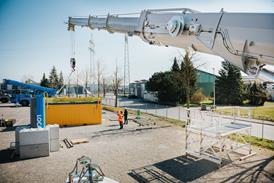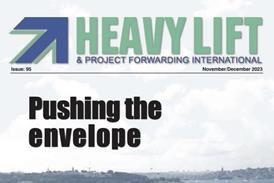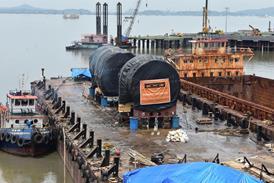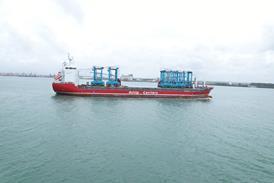Large shipping losses have declined by more than a third (38 percent) over the past decade, according to Allianz Global Corporate & Specialty SE’s (AGCS) Safety & Shipping Review 2018.
While AGCS expects this downward trend to continue, recent events, such as the collision of the oil tanker Sanchi and the impact of the NotPetya malware virus on harbour logistics, underline that the shipping sector is being tested by a number of traditional and emerging challenges.
There were 94 total losses reported around the shipping world in 2017, down 4 percent year-on-year – the second lowest in ten years after 2014.
Bad weather, such as typhoons in Asia and hurricanes in the USA, contributed to the loss of more than 20 vessels, according to the annual review, which analyses reported shipping losses over 100 gross tons (GT).
“The decline in frequency and severity of total losses over the past year continues the positive trend of the past decade. Insurance claims have been relatively benign, reflecting improved ship design and the positive effects of risk management policy and safety regulation over time,” said Baptiste Ossena, global product leader - hull and marine iabilities at AGCS.
“However, as the use of new technologies on board vessels grows, we expect to see changes in the maritime loss environment in future. The number of more technical claims will grow – such as cyber incidents or technological defects – in addition to traditional losses, such as collisions or groundings.”
There are multiple new risk exposures for the shipping sector, including ever-larger container ships, which pose fire containment and salvage issues.
The changing climate also brings new route risks, with fast-changing conditions in Arctic and North Atlantic waters posing new hazards.
Shippers continue to grapple with balancing the benefits and risks of increasing automation on board. The NotPetya cyber-attack caused cargo delays and congestion at nearly 80 ports, underlining the threat of cyber risks for the sector.
According to the report, almost a third of shipping losses in 2017 (30) occurred in the South China, Indochina, Indonesia andthe Philippines maritime region, up 25 percent annually, driven by activity in Vietnamese waters. This area has been the major global loss hotspot for the past decade, leading some media commentators to label it the ‘new Bermuda Triangle’.
Outside of Asia, the East Mediterranean and Black Sea region is the second major loss hotspot (17) followed by the British Isles (8). There was also a 29 percent annual increase in reported shipping incidents in Arctic Circle waters (71), according to AGCS analysis.
Human error continues to be a major driver of incidents
- Captain Rahul Khanna, global head of marine risk consulting, AGCS
Despite decades of safety improvements, the shipping industry has no room for complacency, says AGCS. Fatal accidents such as the Sanchi oil tanker collision in January 2018 and the loss of the El Faro in Hurricane Joaquin in late 2015 persist and human behaviour is often a factor.
“Human error continues to be a major driver of incidents,” says Captain Rahul Khanna, global head of marine risk consulting, AGCS. “Inadequate shoreside support and commercial pressures have an important role to play in maritime safety and risk exposure. Tight schedules can have a detrimental impact on safety culture and decision making.”
Cyber incidents, like the global NotPetya malware event, have been a wake-up call for the shipping sector. Many operators previously thought themselves isolated from this threat. “As technology on board increases, so do the potential risks,” says Khanna.
At the same time, new European Union laws such as the Network and Information Security Directive (NIS), which requires large ports and maritime transport services to report any cyber incidents, will exacerbate the falloutfrom any future failure – malicious or accidental.
“The current lack of incident reporting masks the true picture when it comes to cyber risk in the marine industry,” says Khanna. “The NIS directive will bring more transparency around the scale of the problem.”
www.agcs.allianz.com















